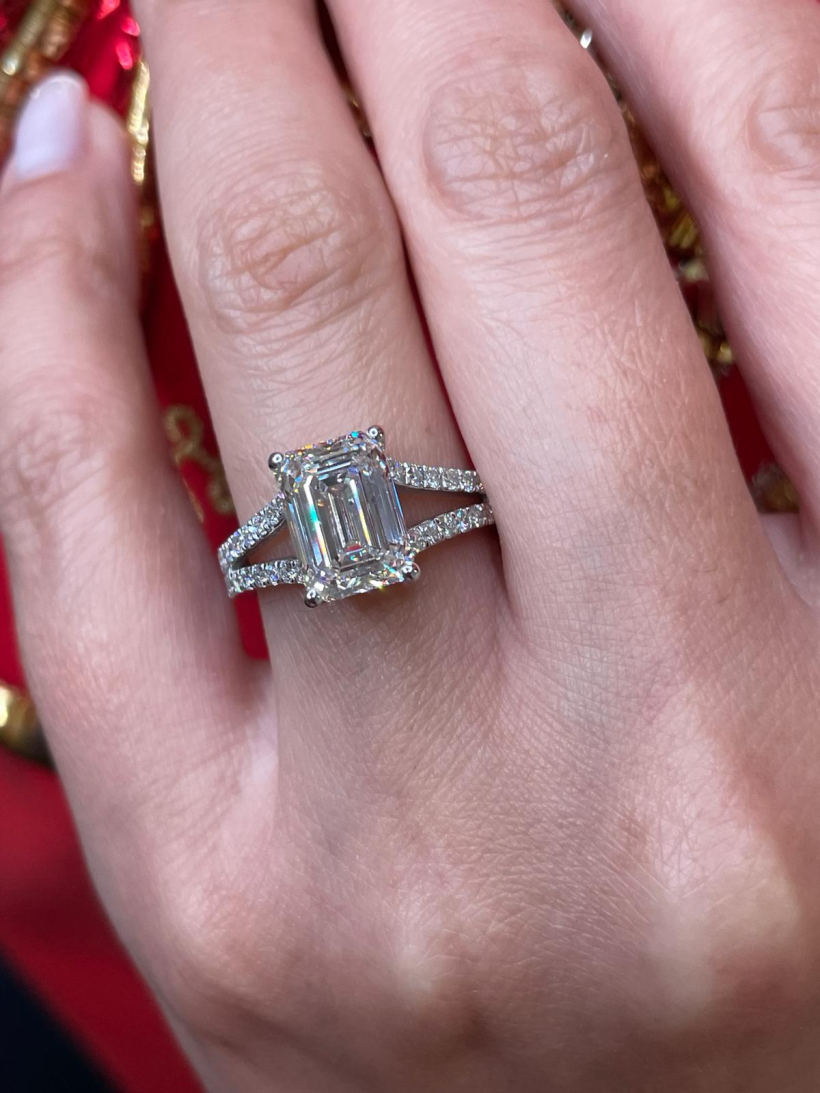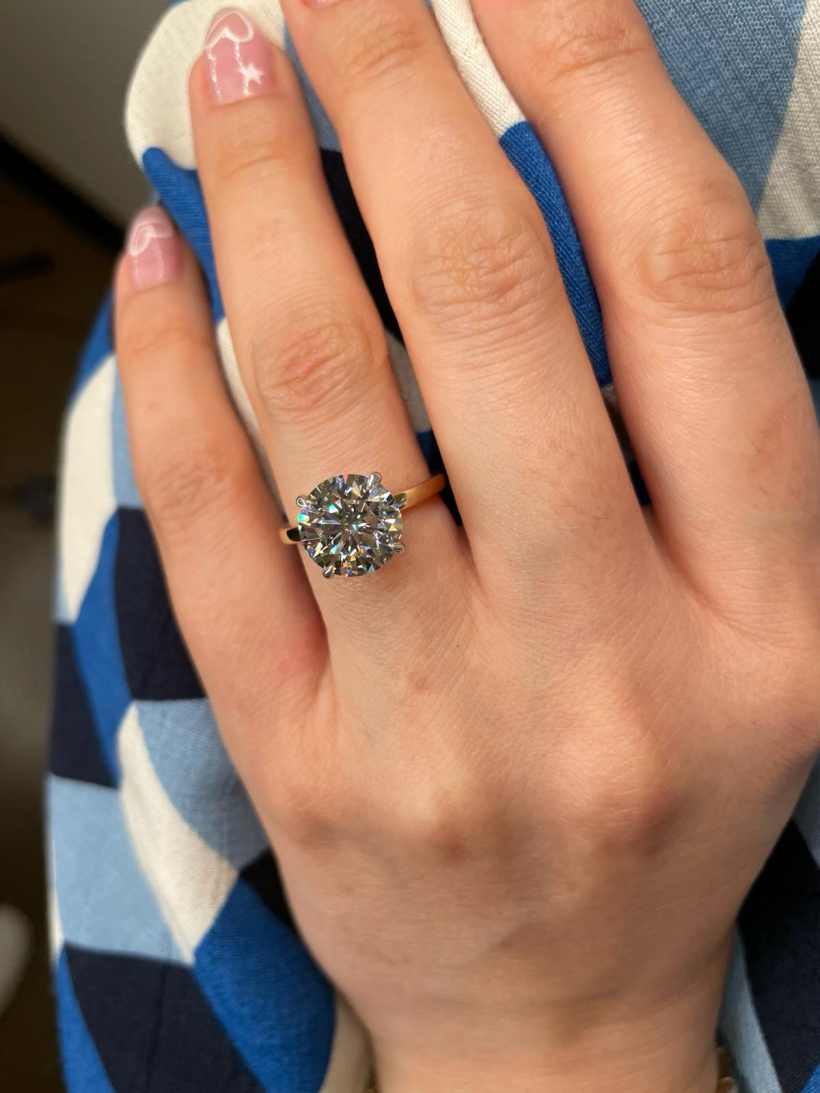Have you ever gone to a jeweler and been asked your ring size, only to freeze in a sudden panic? If so, you’re certainly not alone. Most people don’t know their ring size, especially because ring sizes can actually change over time! As you get older, you may experience weight fluctuations, arthritis, or just natural changes in your body that cause your fingers to get larger or smaller. While this doesn’t necessarily mean you’ll have to run to the jeweler to get your ring resized, it could affect the ease with which you put your ring on or take it off. It could also affect how comfortable it is to wear your ring on a daily basis.
So, if you’re new to the world of ring sizes, you’ve probably got a ton of questions. For instance, how can you actually find your ring size? Is there a way to measure your ring size at home? Finally, once you know the size of your ring finger, where can you shop for affordable, pre-owned rings that will fit you?
In today's guide, we will answer all of these questions and more, but first, let’s look at what ring sizes actually mean:
What Ring Sizes Mean
If you want to be quite literal, your ring size is simply the circumference of your ring finger (the finger between your pinky and middle finger). More specifically, it is the measured circumference of the base of your ring finger. In other words, the total circumference of your finger is measured at the point where a ring would naturally rest. For the vast majority of people, this is the part of the finger just above the palm of your hand (but anywhere between your palm and the knuckle of your ring finger will work for at-home measuring).
Ring sizes can be measured in millimeters or inches, though millimeters are the international standard. However, if you’ve ever seen ring sizes listed before, you’re probably scratching your head. Does my ring finger really have a circumference of six inches? Of course not! The numbers used in ring sizes are just placeholders for very precise measurements.
Fortunately, ring sizes don’t only use whole numbers. For example, the most common ring size for women is about 6, which equates to a circumference of 51.87 millimeters. However, if you need to size up, you could get a 6-¼ ring (52.56 mm), and if you need to size down, you could get a 5-¾ ring (51.24). Also, keep in mind that some countries use their own unique size charts. For instance, the UK uses a lettered system that goes from A to Z, while much of the rest of Europe uses figures that measure the number of millimeters above 40.
How Tight Should A Ring Be?
When you’re trying to figure out ring size, it’s not always enough to just know the circumference of your ring finger. You’ll also want to know how a ring is supposed to fit. As a general rule, the ring should be snug enough that it does not slide around on your finger, but loose enough that it can comfortably go over your knuckle (with a little bit of effort) whenever you need to take it off.
This can be a delicate balance, especially since your fingers (and joints) can change in size and shape with age. Fortunately, it’s pretty easy (and affordable) to get a ring resized, so the important thing is to find a size that fits your finger right now. As long as it can fit snugly and comfortably on your finger and doesn’t present a challenge to remove, you’re all set!
How Ring Sizes Are Measured At the Jeweler
Not every jeweler will use the exact same method to get a ring measurement, but there are a few common ways to determine ring size accurately. In most cases, jewelers will have a series of metal ring sizers that they can apply to your fingers. These are essentially just metal rings that are marked with their respective sizes. If one does not fit comfortably, the jeweler will try the next size up or down until they find a size that works for you.
Another common method involves a tool called a “mandrel.” This is just a metal rod that has size markings and gets gradually thicker from top to bottom. Using a mandrel generally requires you to provide a ring that already fits you. This way, the jeweler can simply slide the ring onto the mandrel, see where it lands, and determine your ring size from there.
There are other measuring tools that can be used, such as calipers or even physical size charts, but these are not quite as common or as accurate. Some factors that could affect how the jewelers measure your finger include the design of the ring you want. For example, some rings have curved interior bands, which could impact the size you need. If this is the case, the jeweler may need to make certain adjustments or use several different methods to calculate the diameter and circumference of your ring finger.
How To Measure Your Ring Size At Home
If you don’t want to wait until you can get to your nearest jeweler, there are a few easy ways to measure your ring size at home. Some of the simplest and most common methods include:
-
Printing Out Size Charts - If you can ensure that you’re printing the correct dimensions, you can easily download and print a size chart you find online. Then, all you have to do is compare your finger to the sizes on the chart.
-
Measuring With String - This is a tried and true method that’s been used for years. All you have to do is cut a length of string, wrap it around your finger, and make a mark at the point where the tip of the string meets the base or starting point of the string. Then, measure that length using measuring tape or a standard ruler. Finally, use an online chart to convert the millimeters or inches to the correct numerical size.
-
Purchasing a Ring Sizer - If you really want to be sure of your ring size, you can find various ring sizer kits for sale online. These will consist of many different metal or plastic rings that you can use to determine your ring size in seconds. If you’re worried about your size changing in the future, this could be a worthwhile long-term investment.
-
Sizing With a Mobile App - Finally, technology has brought us to the point where you can just hold your finger up to your phone and discover your ring size! You’ll have to download an app that can do it, but this is one of the easiest ways to figure it out without having to do any measuring on your own.
Do 1/2 Or 1/4 Ring Sizes Make A Difference?
In short, yes — ½ and ¼ ring sizes can make a huge difference when trying to find a comfortable fit. Each quarter increase in size equals a little over 0.2 millimeters in circumference, and each half increase is a little over 0.4millimeters. It may not sound like much, but these incremental changes can make a world of difference for you. Just remember that getting the size right is important because, if everything goes as planned, you could be wearing this ring for the rest of your life!
We hope you enjoyed our guide on how to measure ring size! Are you currently trying to buy or sell a used engagement ring? If so, be sure to contact HYSTR today!








